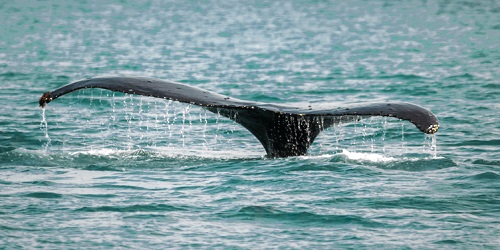← Back
Argos celebrates World Whale Day

Whales are some of the most fascinating creatures on Earth. They inhabit all of the world’s major oceans, including the Arctic, the Antarctic and the tropical waters of the Atlantic, Pacific and Indian oceans. From the blue whale, which is the world’s largest, to the elegant narwhal, these enigmatic marine mammals attest to the beauty of nature. After having been hunted for centuries, some whale populations have rebounded, but whales are still vulnerable to plastic pollution, climate change and loss of habitat due to anthropogenic factors.
Tracking whales with Argos
In 2018, the Argos user community tracked 1,320 whales using the Argos system, shedding new light on the migratory patterns, home range, and behavior of these majestic animals.
World Whale Day is the occasion to raise awareness about these marine mammals and to protect these beautiful, vulnerable creatures.
Please find a selection of articles, websites and videos highlighting the work of Argos users to understand and protect whale species around the world.
More info about marine animals tracking
Understanding the impact of human activity on narwhals in the Arctic

Photo courtesy Carsten Egevang
Wide-scale changes are taking place in the Arctic, with warmer temperatures leading to shrinking summer ice coverage. More ice-free water means easier access for vessels and industrial operations, such as exploration for oil and gas, shipping, sand dredging and fisheries. Faced with these changes, how can we protect vulnerable Arctic marine mammals? Mads Peter Heide-Jørgensen of the Greenland Institute of Natural Resources explains that an interdisciplinary approach – and a wide range of technologies – must be used to understand the impact of human activity on whales in this once untouched region.
The Plight of Whales

Photo by Steve Halama on Unsplash
In the Chesapeake Bay area of the East Coast of the United States, scientists have noted an increase of whale deaths between 2016-2018. While 13 whales were killed in Virginia in the ten years between 1990 and 2000, according to studies, 14 deaths were reported in the same area between 2016 through 2018. Susan Barco, Research Coordinator and Senior Scientist, and her colleague Mark Swingle, Director of Research and Conservation, have been using Argos satellite tags to study whale movements in and near the Chesapeake. This article from the Chesapeake Bay Magazine highlights their findings about the interactions between whales and shipping routes.
NOAA’s Whale Watch program
Helen Bailey, of the University of Maryland Center for Environmental Science, works closely with a team of scientists from NOAA Fisheries, and Oregon State University to combine Argos satellite tracking data with satellite observations of ocean conditions in order to predict locations of blue whales off the West Coast. The system, called WhaleWatch, produces monthly maps of blue whale “hotspots” to alert ships where there may be an increased risk of encountering these endangered whales.
Watch the movie “A Voice for Whales: Using Satellite Data to Protect Marine Mammals”
Azores Whale Lab
Learn more about this dynamic laboratory in the North Atlantic Ocean.
